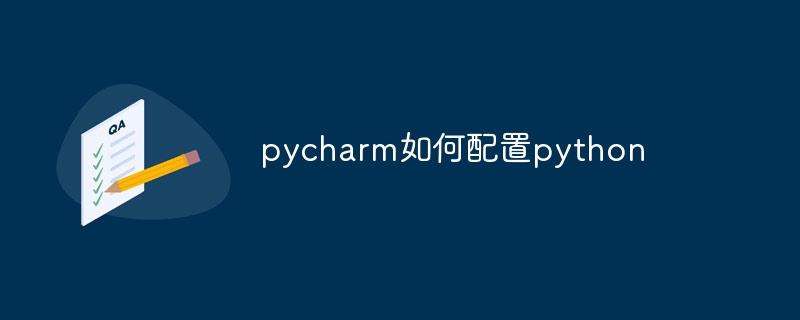
Configuration steps: 1. Open PyCharm and open your project; 2. Enter the "File" option in the menu bar; 3. Select "Settings"; 4. In the settings window, find "Project: [ "Python Interpreter" option under "Your Project Name]"; 5. Click the settings button next to the "Python Interpreter" drop-down menu, and then select "Add..." to add a new Python interpreter.

The operating system for this tutorial: Windows 10 system, Python version 3.11.4, Dell G3 computer.
Configuring the Python interpreter in PyCharm is very simple, you can follow these steps:
Open PyCharm and open your project.
Enter the "File" option in the menu bar.
Select "Settings" or use the shortcut Ctrl Alt S (Windows/Linux) or Cmd , (Mac) to open the settings window.
In the settings window, find the "Python Interpreter" option under "Project: [Your Project Name]".
Click the settings button (gear icon) next to the "Python Interpreter" drop-down menu and select "Add..." to add a new Python interpreter.
In the pop-up dialog box, you can select the installed Python interpreter, or click the "System Interpreter" option to select the Python interpreter installed in the system, or select "Virtualenv Environment" option to create a new virtual environment.
After completing your selection, click "OK" to confirm your selection.
Return to the settings window and you will see the Python interpreter you have selected. Click "OK" to save the settings and close the window.
Now, you have successfully configured the Python interpreter. You can use this interpreter in PyCharm to run and debug your Python code.
The above is the detailed content of How to configure python with pycharm. For more information, please follow other related articles on the PHP Chinese website!




